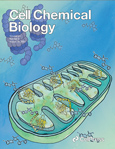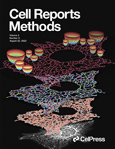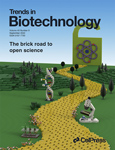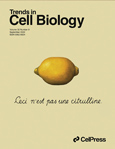Supporting Publications

Structure aims to publish papers of exceptional interest in the field of structural biology. The journal strives to be essential reading for structural biologists, as well as biologists and biochemists that are interested in macromolecular structure and function. Structure strongly encourages the submission of manuscripts that present structural and molecular insights into biological function and mechanism. Other reports that address fundamental questions in structural biology, such as structure-based examinations of protein evolution, folding, and/or design, will also be considered. We will consider the application of any method, experimental or computational, at high or low resolution, to conduct structural investigations, as long as the method is appropriate for the biological, functional, and mechanistic question(s) being addressed. Likewise, reports describing single-molecule analysis of biological mechanisms are welcome.

Cell publishes findings of unusual significance in any area of experimental biology, including but not limited to cell biology, molecular biology, neuroscience, immunology, virology and microbiology, cancer, human genetics, systems biology, signaling, and disease mechanisms and therapeutics. The basic criterion for considering papers is whether the results provide significant conceptual advances into, or raise provocative questions and hypotheses regarding, an interesting and important biological question. In addition to primary research articles in four formats, Cell features review and opinion articles on recent research advances and issues of interest to its broad readership in the leading edge section.

Cell Chemical Biology is a Cell Press journal that aims to publish the most important advances in chemical biology research of exceptional interest for our diverse community, from basic scientists to clinicians. Launched in 1994 under the title Chemistry & Biology, the journal was the first to recognize the growing importance of investigations at the interface of chemistry and biology. The mission has always been to support and promote chemical biology and conversation and collaboration between chemical and life sciences.

Molecular Cell aims to publish the best research in molecular biology. The journal covers core cellular processes, including:
- DNA replication, recombination, and repair
- Chromatin biology and genome organization
- Transcription
- RNA processing and decay
- Non-coding RNA function
- Translation
- Protein folding, modification, and quality control
- Signal transduction pathways
- Cell cycle and checkpoints
- Cell death
- Autophagy
- Metabolism

Cell Reports is an open-access journal from Cell Press that publishes high-quality papers across the entire life sciences spectrum. The primary criterion for publication in Cell Reports, as for all Cell Press journals, is new biological insight. Cell Reports publishes thought-provoking, cutting-edge research, with a focus on a shorter, single-point story, called a Report, in addition to a longer Article format. Cell Reports also publishes Resources, which highlight significant technical advances and/or major informational data sets.

Cell Reports Methods is an open access, multidisciplinary journal from Cell Press publishing significant methodological advances of broad interest. The primary criterion for publication in Cell Reports Methods is a robust, reproducible method that will spur scientific progress. We will also consider papers presenting a new tool or set of reagents that will be of significant utility and interest to the community. Cell Reports Methods publishes shorter, single-point stories, called Reports, in addition to a longer Article format. Areas of interest include innovations in sequencing and imaging technologies, genome editing, single-molecule approaches, computational methods, biotechnology, and synthetic biology.
We are committed to open science and scientific reproducibility. To promote these goals, we offer the following to our authors, reviewers, and readers:
- Opportunity to co-publish bench-top protocols through collaboration with STAR Protocols
- Application of the STAR Methods structure to ensure transparency and reproducibility
- Data and code required for reviewers at the time of submission
- Mandatory deposition of raw data at resubmission

iScience publishes basic and applied research that advances a specific field across life, physical, and earth sciences. It's an open access journal with continuous publication, so research is immediately accessible. Our no-nonsense approach to submissions is simple, fast, and fair, and our commitment to integrity means we publish transparent methods, replication studies, and negative results.

Neuron has established itself as one of the most influential and relied upon journals in the field of neuroscience. The editors embrace interdisciplinary strategies that integrate biophysical, cellular, developmental, and molecular approaches with a systems approach to sensory, motor, and higher-order cognitive functions. Neuron serves as one of the premier intellectual forums of the entire neuroscience community.

For over 40 years, Trends in Biochemical Sciences (TIBS) has kept readers up to date on recent advances across all disciplines of biochemistry and molecular biology. Through monthly, peer-reviewed publications, TIBS monitors the expanding scope of biochemistry while continuing to cover traditional subjects such as protein structure and function, signaling, and metabolism. Articles are curated by the Editor and authored by leading researchers in their respective fields. TIBS Review and Opinion articles have key goals to move beyond simply summarizing the literature to synthesizing the data, providing insights into the future direction of the field, and ultimately having a novel point of view.

Trends in Neurosciences For over four decades, Trends in Neurosciences (TINS) has been a prominent source of inspiring reviews and commentaries across all disciplines of neuroscience. TINS is a monthly, peer-reviewed journal, and its articles are curated by the Editor and authored by leading researchers in their respective fields. The journal communicates exciting advances in brain research, serves as a voice for the global neuroscience community, and highlights the contribution of neuroscientific research to medicine and society.

Trends in Biotechnology publishes reviews and perspectives on the applied biological sciences: useful science applied to, derived from, or inspired by living systems.
The major themes that TIBTECH is interested in include:
Bioprocessing (biochemical engineering, applied enzymology, industrial biotechnology, biofuels, metabolic engineering)
Omics (genome editing, single-cell technologies, bioinformatics, synthetic biology)
Materials and devices (bionanotechnology, biomaterials, diagnostics/imaging/detection, soft robotics, biosensors/bioelectronics)
Therapeutics (biofabrication, stem cells, tissue engineering and regenerative medicine, antibodies and other protein drugs, drug delivery)
Agroenvironment (environmental engineering, bioremediation, genetically modified crops, sustainable development)

Trends in Cell Biology is among the leading review journals in molecular and cell biology. Review articles published each month monitor the breadth and depth of current research in cell biology, reporting on new developments as they happen and integrating methods, disciplines and principles. In addition to Reviews, Trends in Cell Biology publishes Opinion articles, which follow trends and provide innovative ideas to give insight into the implications of new developments and suggest future directions. All articles are commissioned from leading scientists and then subjected to stringent peer-review, ensuring balance and accuracy.